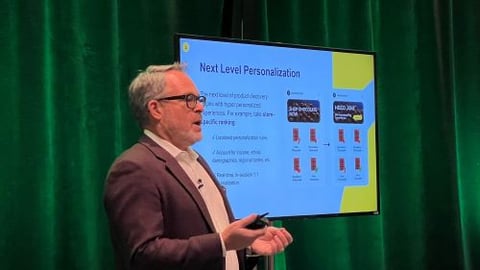Personalization Isn’t Scary
Every time a new technology enters mainstream conversation, skeptics emerge. Often, the biggest criticisms come from consumers who don’t understand how the technology works or the benefits it can provide. This lack of information can sometimes create fear or distrust.
Unfortunately, personalization isn’t immune to this negative perception and misunderstanding, despite its longevity in retail. As retailers move toward a more individualized approach to personalization, as opposed to generic segmentation, this sentiment is likely to re-emerge. For example, when a shopper is told that a promotion was chosen specifically for them based on their past shopping behavior, some will worry about their privacy.
[Read more: "EXCLUSIVE: What Tech Investments Should Food Retailers Be Making Right Now?"]
Yet, despite the skepticism, personalization in grocery retail is incredibly successful and appreciated by consumers and grocers alike. Today, prices for grocery items are higher than in years past, and personalized promotions can provide the relevant discounts needed to offset these price hikes.
How can grocers win over these hesitant shoppers and make the most of their personalization investments? Read on to find out.
Why Grocers Should Offer True Personalization
Consumers want personalization. In fact, Merkle found that 90% of consumers appreciate personalized offers. To make this initiative worthwhile for shoppers, however, grocers must make sure that it’s true personalization and not segmentation.
Today, many forms of “personalization” are actually based on groups of shoppers that are determined by similar characteristics and behaviors. This segment-based approach creates offers that will likely be relevant for the shopper, but they’re not always accurate.
True personalization, however, considers the specific actions of one individual across the shopping journey. While it may sound more intimidating, this level of detailed outreach can be personalized to the shopper’s favorite product categories, price ranges and cyclical re-purchasing patterns. Beyond promotions, true personalization can inform any customer touchpoint, including customer service, marketing, operations and even the buying department.
True personalization has a greater effect on long-term customer relationships, because the shopper is consistently shown effective messaging and deals. This helps shoppers fill their baskets with the best products and the best prices for them, all while enhancing profitability and connectivity for the grocer.
What Benefits Stem From Personalization?
A study from October 2022 found that 94% of shoppers use coupons, and 67% made an additional, unplanned purchase solely because of a coupon. These findings show that shoppers are excited by coupons and are willing to increase their basket size to receive the discount. Therefore, this is an area of great opportunity for grocers as they struggle with profitability amid inflation.
The best way to increase coupon redemption rates and basket sizes is by ensuring that all promotions and outreach are targeted. For example, customers can benefit from recipe recommendations based on their typical shopping list, new product recommendations based on their sweet tooth, or reminders of commonly purchased items that might have been forgotten during the weekly grocery run. These messages improve the in-store journey and highlight the importance of forming a loyal relationship with the grocer.
How Grocers Should Introduce True Personalization
Despite the benefits, some shoppers will still be wary of how grocers are using their data to create personalized offers. They may be hesitant that their personal and identifying information is being used inappropriately. That’s why the transition to a personalized retail strategy must be gradual and transparent. First, grocers should explain how the technology will work and what data and customer information it can pull from. They should also explain that this data is encoded and not shared freely with employees or other customers.
Then the grocer should highlight the financial benefits as well as the opportunities for relevant product discovery and more efficient in-store journeys. Finally, the grocer should allow consumers to make an informed choice and opt in to personalized communication and discounts.
Once the shoppers are open to the idea, grocers can implement personalization with artificial intelligence (AI) to make this money-saving transition a time-saving one, too. This AI will coordinate individualized coupons and offers based on the customer’s purchasing patterns and irregularities from across the shopper’s time with the brand. With this AI-driven personalization in place, grocers will create a stronger customer journey that inspires larger basket sizes, more frequent visits and ongoing customer loyalty.
Reimagining Personalization With Customers on Board
Managing change can be difficult, but to take customer engagement to the next level, this transition is necessary. The grocery shopping experience has room for improvement, and personalization is one key way that grocers can lead this change and offer the best customer experience possible. Once grocers explain how personalization works and why it will benefit shoppers, the world of personalization is available for all to enjoy.






